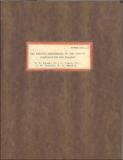| dc.contributor.author | Allen, G. C. | en_US |
| dc.contributor.author | Clark, Lincoln | en_US |
| dc.contributor.author | Gosnell, James Waterbury | en_US |
| dc.contributor.author | Lanning, David D. | en_US |
| dc.contributor.other | Massachusetts Institute of Technology. Department of Nuclear Engineering | en_US |
| dc.date.accessioned | 2014-09-12T23:52:20Z | |
| dc.date.available | 2014-09-12T23:52:20Z | |
| dc.date.issued | 1976 | en_US |
| dc.identifier.uri | http://hdl.handle.net/1721.1/89497 | |
| dc.description | Statement of responsibility on title-page reads: G. C. Allen, Jr., L. Clark, Jr., J. W. Gosnell, and D. D. Lanning | en_US |
| dc.description | "June, 1976." | en_US |
| dc.description | Also issued as a Ph. D. thesis by the first author, MIT Dept. of Nuclear Engineering, 1976 | en_US |
| dc.description | Includes bibliographical references (pages 518-521) | en_US |
| dc.description.abstract | The heavy water moderated and cooled research reactor, MITR-I, has been replaced with a light water cooled, heavy water reflected reactor called the MITR-II. The MITR-II is designed to operate at 5 thermal megawatts. The MITR-I was shutdown in May, 1974, dismantling, construction, and preoperational testing continued until the MITR-II went critical on August 14, 1975. Cadmium absorbers were fixed in the upper core of the first fuel loadings to shorten the active core height and provide reactivity control. Solid non-fueled elements were also loaded for additional reactivity control. Swelling of the original cadmium fixed absorbers necessitated a second core configuration. The second core contained additional solid non-fueled elements and no fixed absorbers. The compact core of the MITR-II causes thermal neutron flux and power peaking to occur at the core outer boundaries and incore locations with excess moderator. The active core power density is in the!
range of 100 to 150 watts/cm 3 with peaks up to 300 watts/cm 3 . The power, flow, and temperature distributions of the initial core loadings were determined analytically and experimentally in order to evaluate the safety limit factor and limiting operating conditions. Neutron flux, core temperature, coolant flow, and power distributions were measured by various experimental techniques. The thermal-hydraulic parameters of the initial fuel loadings are evaluated and shown to satisfy the acceptance criteria for operation of the MITR-II. | en_US |
| dc.format.extent | 652 pages | en_US |
| dc.publisher | Cambridge : Massachusetts Institute of Technology, Dept. of Nuclear Engineering, 1976 | en_US |
| dc.relation.ispartofseries | MITNE ; no. 186 | en_US |
| dc.subject.lcsh | Massachusetts Institute of Technology. Research Reactor | en_US |
| dc.subject.lcsh | Heavy water reactors | en_US |
| dc.subject.lcsh | Nuclear fuel elements | en_US |
| dc.title | The Reactor engineering of the MITR-II : construction and startup | en_US |
| dc.type | Technical Report | en_US |
| dc.identifier.oclc | 02452076 | en_US |
